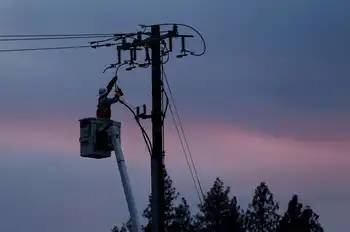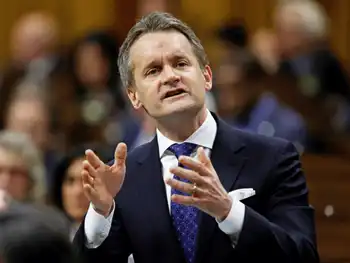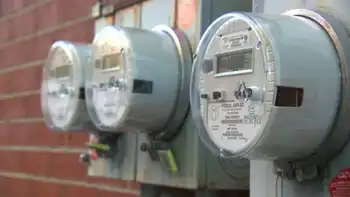Lessons didn't stick for utilities after outages in 2003
By Detroit Free Press
Substation Relay Protection Training
Our customized live online or in‑person group training can be delivered to your staff at your location.

- Live Online
- 12 hours Instructor-led
- Group Training Available
More than 6 million people in Michigan and 50 million in all of North America were left in the dark. In the wake of the outage - one of the largest in North American history - U.S. regulatory agencies cracked down on transmission companies that did not perform regular tree maintenance along the high-voltage lines that move electricity from generators to distribution companies.
But while transmission companies have become more reliable, the Free Press has learned that distributors Consumers Energy and DTE Energy have not met reliability standards spelled out by the state's regulatory agency, the Michigan Public Service Commission (MPSC).
In the agency's reports, problems similar to those at the transmission level that triggered and worsened the 2003 blackout - including issues with tree trimming and with response to outages - exist at the distribution level. And those problems appear o have played a role in the June storms that left more than 720,000 DTE Energy and Consumers Energy customers without power. The newspaper's review, which included hundreds of pages of state and federal records and interviews with customers and government and company officials, showed:
- Consumers Energy has come under heightened scrutiny by the MPSC for poor performance in tree trimming.
The company is required to send annual reports to the MPSC to ensure it uses tree-trimming funds appropriately.
- Consumers Energy and DTE Energy did not meet state reliability standards in 2007 that called for restoring 90% of customers' lost power within eight hours under normal conditions.
- DTE Energy was still having problems in June with its system for receiving customer outage reports, something the MPSC asked the utility to improve as far back as 1999.
- The MPSC is now investigating utility response to the June outages, including a series of public hearings, and is set to release a report by the end of this month.
Union officials say the decreasing number of linemen on the staffs of both companies - and increasing reliance on contractors - may be slowing the speed at which tree trimming and restoration are done.
Some customers, such as Maria Kho of Royal Oak, blamed weeklong outages in June on the poor maintenance. Part of a cottonwood tree fell into her yard, ripping down six live wires.
"We were scared," said Kho, a DTE customer. She said she was afraid the tree would catch fire. It took crews seven days to arrive and fix the lines. The 75-foot remains of the tree hovered dangerously near her home until an Ohio-based crew removed it the last week of July.
Often, outages can be prevented by trimming trees and performing other line maintenance on a routine basis, federal and state regulators say. About one-third of Consumers Energy outages are caused by fallen tree limbs, said company spokesman Jeff Holyfield. He said a 10-foot line clearance can prevent outages, but when violent storms uproot entire trees, power lines will be knocked down regardless.
"At the end of the day it all comes down to service to our customers," Holyfield said, mentioning MPSC regulations. "We consistently meet those standards." But the agency's records seem to tell another story.
Consumers Energy has been cited repeatedly by the MPSC for poor performance in tree trimming, and the state has been monitoring the utility's spending for that work since 2005. The company has tried to get out of that oversight, but the MPSC prevailed against the challenge in June.
"Consumers' failure to adequately fund its forestry program for several years has compromised service reliability, quality and safety," the MPSC stated in a report. Consumers would not provide specifics to the Free Press about its tree-trimming program, including how many contractors and company linemen it routinely uses, or how many contractors are brought in for storm restoration.
This year's storms also highlighted DTE Energy's struggles since 1999 to keep its phone system running properly. During the June storms, customers reported outages one day that were not recognized the next, while others simply had trouble reaching the company.
"I tried calling DTE all night to report the outage, but there was a message stating my call could not be completed or I got a busy signal," Pontiac resident Wanda Williams wrote in a June 23 formal complaint to the MPSC. Vince Dow, DTE Energy's vice president of distribution operations, said the recent phone issues were caused by the high volume of calls and "problems with the way the calls came into us.
"We've worked with our vendors to rectify it," he said.
Long phone waits were an issue for DTE in 1999, too, when the MPSC recommended the company fix its system for receiving customer outage calls. Standards raise arguments MPSC reports show that Consumers and DTE did not meet state standards in 2007 for restoring power during so-called normal outages: 90% back up in eight hours. The commission only categorizes storms as catastrophic when they knock out power to 10% or more of a distribution company's customers.
The June storms fell into that category, meaning the companies had 60 hours to restore 90% of the lost power. But Dow said DTE Energy disagrees with the catastrophic threshold, noting that some storms in 2007 caused more than 100,000 customer outages, but were still rated normal.
"I don't think anyone would say that 100,000 customers out is a normal day," he said. Over the past 10 years, the companies have relied more on contractors and out-of-state crews instead of local linemen employed to handle trimming and restoration issues. Will Ellsworth, president of the Michigan State Utility Council, which represents Consumers Energy workers, said Consumers directly employs about 700 line workers and that the number is dwindling. All tree trimming is contracted out, he said, and those workers don't have as much experience, nor can they clean up individual trees as quickly as workers checking lines daily.
"Maintenance suffers," Ellsworth said. DTE Energy said it has contracted all tree-trimming jobs for at least 15 years. The company has relied on those contract linemen because of Michigan's fluctuating economy, Dow said. "We don't need as many linemen to build things now because there's nothing being built," he said. At least some customers say the utilities should not be blamed for this year's outages.
"It's not the power companies' fault we lost power," said Jason A. Liston, 33, a Shelby Township banker. "It's Mother Nature's fault."











